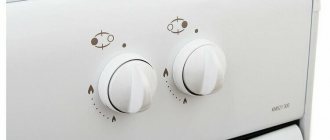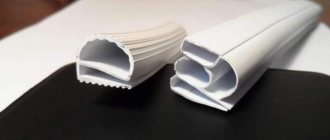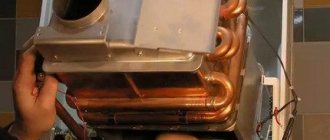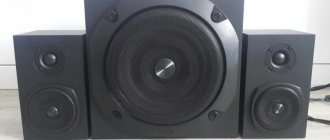Ariston gas water heaters are products of the Italian brand of the same name, popular in Russia since the 90s. Affordable cost, which attracts Russian consumers, is achieved by locating production facilities in China. The equipment is adapted to specific operating conditions - the possibility of reduced water pressure and its increased hardness are taken into account. Ariston instantaneous water heaters have a wide range of performance - the brand presents a model range in which you can find an option for any need - from low-power versions to models that can simultaneously serve several water intake points.
About company
Ariston is an Italian brand that has been supplying Europe with gas equipment for hundreds of years. The company's products are famous for their quality; they offer a wide variety of household appliances - from dishwashers to water heaters. The location of the headquarters is Fabriano. After rebranding in 2005, the company's name changed to Indesit Company. This concern, in addition to Ariston, owns the brands Hotpoint, Indesit and Scholtes. Today Ariston ranks third in the global ranking of sales of household appliances.
What do Ariston models have in common?
Ariston gas equipment supplied to Russia is assembled in China. The transfer of production capacity had a positive impact on the cost of the speakers, and their parameters fully comply with European quality standards. The products are distinguished by their reliability, maintainability and thoughtful design. Common to all brand modifications:
- Simple classic design.
- Compact design.
- Equipped with security systems. Gas control, draft and temperature sensors, and overheating protection are provided. The system allows you to prevent an emergency in case of any problems in the water supply or gas supply.
All equipment that goes on sale has test settings - they are set at production according to standard operating parameters. After purchasing the equipment, each owner can adjust it in accordance with specific pressure and pressure parameters. You can do this yourself - just read the instructions. If in doubt, contact the service department - specialists will professionally perform the setup. This will not only ensure efficient and comfortable operation of the device, but will also extend its service life.
Setting up the device when connecting for the first time
When you turn on the Ariston household gas water heater for the first time, it must be configured accordingly. All issues related to the installation of the device are described in detail in the operating instructions.
The manual includes explanations on how to connect the device to the water supply, turn it on and light the flame. Each action has its own scheme, which must be strictly adhered to in order to avoid problems when using a instantaneous gas water heater.
The Ariston gas boiler is a reliable unit that, if properly installed, connected and operated, will provide you with hot water at any time of the year.
Correct setting is carried out according to the following algorithm:
- Adjusting the water flow - at this stage the water flow should be adjusted; it should be made minimal (the optimal value is 6, 10 or 12 liters). If this step is not completed at the very beginning, then the entire installation will be inaccurate.
- Adjusting the water temperature - the mixer supplying hot water must be turned/opened to full power. Moreover, it is only allowed to turn on one valve/open one tap in the entire room. Next, the water temperature is adjusted, after which the tap is closed.
- Adjusting the gas supply - for this you need to clarify the minimum parameter of the unit (you can find it in the data sheet of the Ariston dispenser). To regulate the gas supply, the toggle switch returns to minimum and the gas supply valve opens.
- The next step is to open the hot valve. After this, the water heater immediately starts working - experts recommend waiting for the pressure in the line to drop before starting installation, and then turning the gas regulator to the minimum value until the optimal temperature is reached.
- The final stage is adjusting the hot flow. First you need to open the mixer and evaluate the heating temperature of the flow, which should be 25 degrees higher than at the outlet. Since the gas boiler heater heats the water gradually, you need to wait.
Experts recommend not increasing the temperature of hot water above 55 degrees, since in this case scale deposits will begin in the heat exchanger, which can negatively affect the operation of the device. And over time the column will need to be cleaned.
Pros and cons of Ariston speakers
Advantages:
- Quiet operation. There are no extraneous sounds or clicks during ignition and operation.
- Temperature stabilization under different modes.
- The copper heat exchanger is durable, resistant to temperature changes and scale.
- Production and assembly are carried out using European technologies.
- Spectacular design.
Flaws:
- Switching off when the pressure in the water supply pipes drops. This disadvantage is especially noticeable on the top floors of apartment buildings.
- There is doubt about the durability of the components - the Chinese assembly is taking its toll.
- High cost of spare parts. If equipment breaks down, it is more profitable to buy a cheaper analogue from less well-known manufacturers than to replace a unit that has failed.
When choosing a model, consider your needs for hot water volumes, the number of water intake points and your budget. The price of inexpensive versions is up to 10,000 rubles. But they don't last long. To purchase a reliable speaker with wear-resistant components, you need to pay an order of magnitude more.
Basic operating rules
There are different types of gas water heating units. In some houses you can still find geysers from Soviet manufacturers, which are already obsolete and require special knowledge during operation. As a rule, such units are capricious when turned on. These geysers are turned on by manual ignition, and this process is quite complex and responsible. Modern geysers are fully automated, and no special skills are required to turn them on. Now let's talk about everything in order.
Model overview
Ariston Fast Evo Series
Two modifications are presented with a capacity of 11 and 14 liters per minute, Fast Evo11b and Fast Evo 14b, respectively. These are automatic speakers with electric ignition - to maintain the function you need two batteries, which last for a couple of years. Temperature constancy is maintained through a flame modulation system. The devices are distinguished:
- Type C. Here the front panel is equipped with a digital display to control the specified parameters. If the settings are incorrect, the screen will display an error code - after looking at its meaning in the instructions, the user adjusts the device to specific parameters. Control is push-button.
- Type B. A mechanical handle is provided to switch the temperature mode.
Advantages of modification 11b:
- Works at two water intake points.
- Ignition at minimum pressure.
- Stable outlet temperature.
Cons of 11b:
- Unpresentable design.
- Users note a humming sound with a small flame, which disappears when fully burning.
Advantages of modification 14b:
- Stylish design.
- Minimum adjustment - only one temperature mode is set.
- Temperature stability.
- Quiet ignition.
Cons of 14b:
- Replacing batteries.
Marco Polo Series
The series is represented by two models - Gi7S and M2. Both are out of production. Flow heaters. Turbocharged system. No chimney. Closed combustion chamber. The pipe is led outside - combustion products are discharged through a window or hole made in the wall. Installation of such devices is carried out after the appropriate permit issued by the gas supervision authority. Both models have an open combustion chamber. Power polo Gi7S – 22 kW, M2 – 18 kW. Productivity is 11 and 10 l/min, respectively. Such devices are valuable for rooms without a stationary chimney. The disadvantage of the series is its energy dependence. The fan is powered from 220 V.
DGI 10L CF Superlux
Budget version. The assembly is Russian. Mechanical control. Automatic electric ignition - requires batteries. Productivity - 10 l/min. Estimated cost 7,000 rubles. Technical specifications:
- Maximum heating - 75°C.
- Power 19,200 W.
- There is a gas control system. Overheat protection.
- Chimney type.
- Gas consumption - 2 cubic meters. m/h.
Can operate on any type of gas - natural or liquefied. There is a winter-summer switch. Wall mount. Vertical arrangement.
Storage heaters
Storage water heaters are available in two modifications:
- Ariston SGA 200. 8,650 W. Open combustion chamber. Heating +75 °C. Tank capacity – 195 l. Ignites automatically. There are indicators for heating and turning on. There is a thermometer. The container inside is covered with enamel. Works on any type of gas. Gas control protective system. Vertical installation. Floor type. Magnesium anode. Dimensions - 49.5x170x35 cm.
- Ariston SUPER SGA. Capacity 100 l. Dimensions 95x49.5x51 cm. Tank coating, installation and other aspects are similar to the previous model.
Italian storage water heaters with natural draft provide the house with hot water at any volume of consumption and regardless of the temperature of the incoming water. They are used both in everyday life and in industry. Pros of SUPER SGA:
- Adaptation to Russian conditions - they work stably at low gas pressure and pressure in water supply pipes.
- Highly resistant enamel on the inner surface of the tank is an exclusive development of the company.
- Three security system devices. The water heater is equipped with a thermocouple, temperature and smoke sensors.
- Serial or parallel connection.
- Fuel economy.
- Effective thermal insulation - reduces heat loss by 20%.
- Magnesium anode.
- Piezo ignition.
- No electrical connection.
- Durable steel body.
- There is temperature regulation and indication.
Checking traction
Due to the fact that gas water heaters have an open combustion chamber, special attention is paid to draft to prevent carbon monoxide poisoning or create a dangerous emergency situation. To do this, it is important to correctly install the chimney and regularly check the presence and quality of draft.
Modern models of gas water heaters are equipped with sensors that, in the absence or low draft, simply will not allow the equipment to start. But in order to turn on an old gas water heater, you will probably have to make sure that there is draft, since such sensors have not yet been provided in it.
To correctly measure the presence of air flow, it is necessary to use special instruments. But you can do this without any special tools:
- At the point where the hood enters the ventilation shaft, it is necessary to remove a section of the exhaust pipe. The paper cut into strips is fixed in place of the hole. And based on their movement, the quality of traction is checked.
- A lit match is placed in the viewing window of the column. If the flame deviates, this indicates the presence of air flow.
If gas equipment is already working, but there is no draft, it is recommended to open the window for air flow.
Malfunctions
Do not rush to send the device to a service center for repairs; some problems can be solved on their own. For example, replacing batteries. The nature of the malfunction can be judged by the number of blinking indicators:
- A constant light on indicates that it is time to replace the batteries.
- A single flash of the indicator indicates a malfunction of the microswitches.
- Double flashing of the indicator indicates the need to replace the temperature sensor.
- A triple flash indicates that there is no flame during ignition - the ignition electrode and the sensor that controls the flame are suspect.
- Four flashes of the indicator indicate a malfunction of the gas valve.
- Five flashes indicate overheating. It is necessary to check the condition of the chimney.
How to repair a water heater?
The duration of operation of geysers is affected by the quality of water. For minor problems, you can handle the repairs yourself. Classic malfunctions of gas-fired water heaters:
- The device does not turn on or turns off after a short time - “symptoms” indicating that scale has accumulated in the heat exchanger. It needs to be cleaned with a special cleaner.
- It is not possible to get hot water out - the radiator has probably leaked. Another option is incorrect adjustment of the water or gas supply.
- The burner does not ignite. Check the draft - the chimney may be clogged.
Ignition of the water heating device
Depending on the model of the geyser, you can light it in three ways:
- manually - using a piezoelectric element or matches (relevant for older speaker models);
- electric ignition (from batteries or from a 220 V network);
- from a hydraulic turbine.
Manual ignition of the column is possible using matchesif we are talking about an old-style model.
Before turning on such an Ariston gas water heater, you need to perform the following steps:
- Open the water supply tap connected to the device.
- Turn the main valve to allow fuel to flow to the igniter.
- Light the wick with matches.
- Turn on the gas regulator.
This ignition method is not absolutely safe. Therefore, it is necessary to follow all safety rules and keep children away from the device.
In order to light the water heater manually, open the water supply and main gas valves, then light the wick
The manual version using piezo ignition is more convenient. Simply press a button to light the wick in the combustion chamber. Water heaters with piezo ignition do not need to be turned off completely - when the water is turned off, only the wick will burn. Disadvantage of this method: increased gas consumption.
Devices with automatic ignition are the safest and most convenient to use. The latest models of water heating equipment are equipped with this option.
Detailed instructions for turning on an Ariston brand column with automatic ignition:
- Make sure the cold water inlet valve to the water heater is open.
- Make sure the gas valve is also open.
- Check that the batteries are installed correctly (1.5 V LR20).
- Turn the adjustment knob between the minimum and maximum positions.
To turn off the gas water heater, simply close the hot water tap. If you want to completely turn off the gas water heater, you first need to turn the handle (on the control panel) to the OFF position all the way. Then turn off the gas valve on the pipeline.
After complete removal of water, close the water valve on the water supply in front of the gas water heater.
Gas water heaters with automatic switching are considered the simplest and most comfortable to use. In order to light the column, just check whether the batteries are inserted correctly and turn the knob between the “minimum” and “maximum” marks.
Prevention and troubleshooting
If you use moderate heating - up to 40-45 °C, you can avoid scale in the radiator. If you cannot avoid the problem, you will have to clean the radiator. To wash it, you will need tools: screwdrivers - flat and Phillips, open-end wrenches, gaskets and a hose, special descaling powder (you can use vinegar). Cleaning technology:
- Remove the casing and fittings.
- Shut off the water supply at the inlet. Open the nearest warm water tap.
- Unscrew the supply tube from the radiator and move it to the side.
- Pour approximately 1 liter of water from the heat exchanger.
- Place a hose on the radiator inlet and pour the descaling compound through it. This needs to be done gradually. Cleansing will take 3-4 hours. To speed up the process, you can heat the active substance by turning on the igniter.
- Upon completion of cleaning, the liquid is drained. The scale will come out and the pressure will increase.
The radiator is an expensive element. Replacing it is expensive. If there is a leak, the heat exchanger can be soldered at 180 °C. You need a 0.1 kW soldering iron. Often a leak appears on the outside of the heat exchanger, which is made of cheap material. The microcrack is cleaned with sandpaper, wiped with a rag with a solvent and sealed. Before soldering, the water is drained by blowing out the remaining drops using a compressor or vacuum cleaner.










